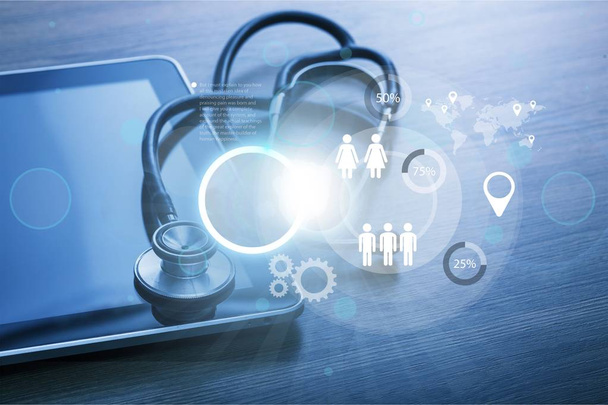In today’s rapidly evolving world, information technology (IT) services have become a cornerstone of various industries, and healthcare is no exception. The integration of IT solutions into the healthcare sector has brought about transformative changes, improving patient care, efficiency, and overall healthcare service delivery. In this blog post, we’ll delve into the role of IT services in healthcare, provide examples of healthcare information technology, and discuss how IT infrastructure bolsters healthcare services.

Role of Information Technology Services in Healthcare
Information technology services play a pivotal role in the healthcare landscape, fundamentally transforming the way healthcare organizations operate. From streamlining administrative tasks to revolutionizing patient care, IT services have emerged as a catalyst for innovation. Key roles include:
Efficient Data Management: IT services enable the secure and organized management of patient data, electronic health records (EHRs), and medical histories. This centralized access to information ensures healthcare providers have the necessary insights to make informed decisions, leading to improved patient outcomes.
Telemedicine and Remote Monitoring: IT services have paved the way for telemedicine and remote patient monitoring, enabling healthcare professionals to conduct virtual consultations, monitor vital signs remotely, and ensure continuous care for patients, especially those in remote areas.
Enhanced Communication: Collaborative tools and communication platforms facilitated by IT services allow healthcare teams to coordinate seamlessly. Quick and accurate communication among medical staff enhances patient care, reduces errors, and expedites decision-making processes.
Examples of Healthcare Information Technology
Electronic Health Records (EHRs): EHRs replace traditional paper-based records, enabling healthcare providers to access and update patient information electronically. This results in streamlined data sharing, reduced errors, and improved patient care coordination.
Picture Archiving and Communication Systems (PACS): PACS allows medical images such as X-rays, MRIs, and CT scans to be stored, accessed, and shared digitally. This enhances diagnosis accuracy, facilitates remote consultations, and minimizes the need for physical film storage.
Health Information Exchange (HIE): HIE systems enable secure sharing of patient data across different healthcare organizations. This interoperability enhances care continuity by providing a comprehensive view of a patient’s medical history, even if they visit multiple providers.
How IT Infrastructure Improves Healthcare Services
Streamlined Workflows: IT infrastructure streamlines administrative tasks, such as appointment scheduling, billing, and inventory management, reducing administrative burdens on healthcare providers and allowing them to focus on patient care.
Data-Driven Insights: IT systems analyze large volumes of healthcare data to identify trends, predict outbreaks, and suggest personalized treatment plans. These insights empower healthcare professionals to make evidence-based decisions.
Reduced Errors: Through automated processes and standardized data entry, IT services minimize the risk of errors caused by manual data handling, ensuring accurate diagnoses and treatment plans.
Remote Accessibility: IT infrastructure enables healthcare professionals to access patient data, collaborate, and provide consultations remotely, improving accessibility to care and breaking down geographical barriers.

As the healthcare industry continues to evolve, information technology services have emerged as a driving force behind its transformation. The integration of IT solutions, from electronic health records to telemedicine platforms, has revolutionized patient care, improved efficiency, and enhanced overall healthcare service delivery. By embracing IT infrastructure, healthcare organizations are not only providing better patient care but also paving the way for a technologically advanced future in healthcare.
Learn more at Wiki as well.